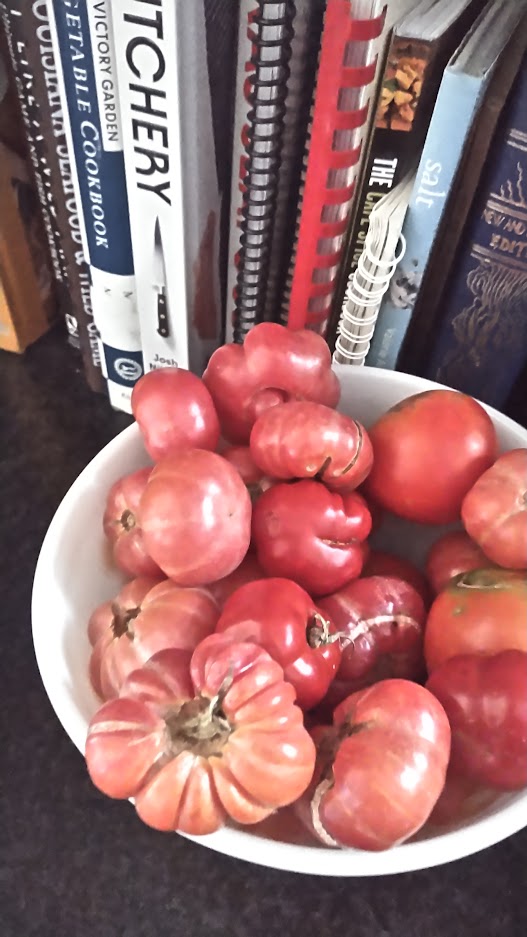
If you aren’t familiar with the gardening conditions in Austin, let me tell you, they’re pretty terrible. Tomatoes in particular have a terrible time of it. Austin hits fatal extremes of heat and cold. You have to plant tomatoes after the danger of frost, but early enough that they fruit before the heat sets in. For years I hadn’t seen anyone grow tomatoes successfully. Then I saw the tomato garden of one of Julia’s friends and it blew my mind. Plants fifteen feet high, loaded down with fruit. Since then I’ve been trying to replicate his success.
The last couple of years I’ve done pretty good, harvesting enough to fulfill the household tomato-needs while also making dried tomatoes for use in pesto dishes later in the year, and also making a couple batches of green tomato pickles (a state fair blue-ribbon winner!).
Here’s the recipe for tomato success in Austin:
- start the seeds around Christmas, inside and under lights. Plant them when the danger of frost seems past, around the end of February or early March (pro-tip: start more seedlings than you need, it’s cheap after all, then keep the extra seedlings in reserve in case frost kills the first batch)
- use the most compost possible. The guy with the giant tomato crop used nearly 100% horse manure. In my case I use all the household compost, and also bury fish heads and whole carp in the raised beds throughout the winter.
- a drip line will make your life way easier
- once the plants are established, cover the dirt on the bed with a layer of wood mulch to limit evaportation. This can be turned in when the next batch of compost is added
- use known heat-adaptive varieties, and save the seeds of the most successful plants
For the last couple of years I’ve been using Iraqi varieties of tomatoes, since you would think that anything that can grow in Iraq can also grow in Texas. And this has proven successful for me.
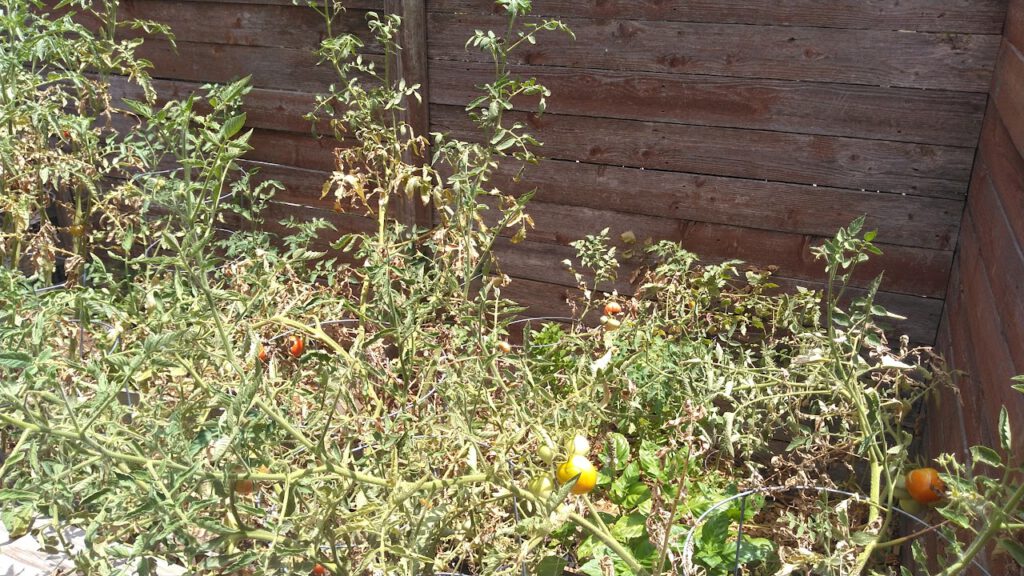
This year I thought I would try something different, I ordered a bunch of heirloom tomatoes which were rumored to be good in the heat, and tried to plant them all at once. The wrinkle to this plan? For various reasons I didn’t get around to planting the seeds until the end of January, nearly a month too late. The result was an inadvertent trial by fire for these poor plants. So I thought I would share with you the results of this experiment into climate extremes. I’ll probably repeat the experiment next year, but with better planting timing, but here’s the preliminary results.
Tomato Varieties: Success and fails
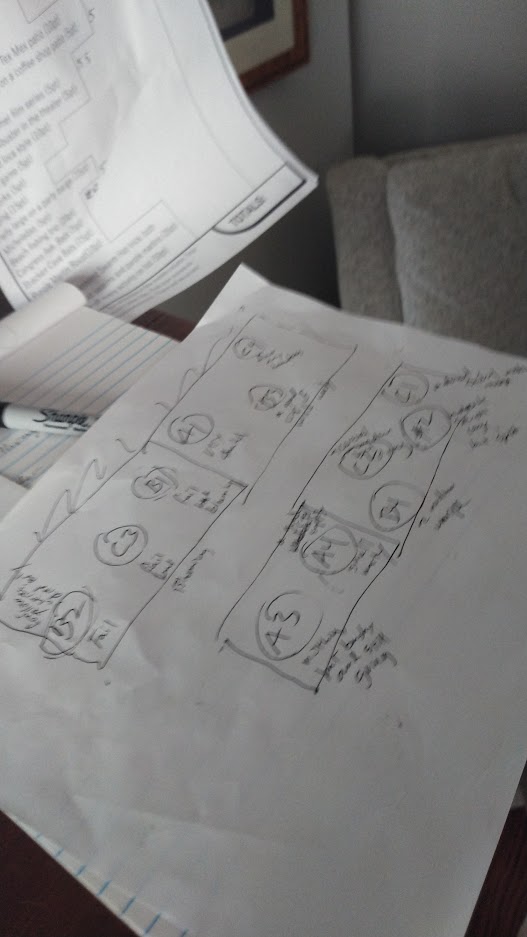
Because I was too lazy to write out the full names of the varieties when I planted them inside and also when I planted them in the garden, I labeled them with a grid-system notation based on their location on the planting trays, and then I placed them in the garden more or less randomly at the beginning of March. This gave me a rudimentary double-blind setup for this experiment. I’ve only just today tabulated the results. Included are the variety name, description of the performance, and position in the garden. Organized roughly in order of how well they did.
- African Togo – Success. A good crop, enough to fill a couple little bowls. Back row, a poor location for growth traditionally, which makes this impressive.
- Criolla Quetzatepeque – Success. A good supply of small and warty fruits. As you might imagine, this variety was responsible for me deciding to use a notation system instead of writing out the entire name on a piece of painter’s tape. Front and center, one of the best locations.
- Raspberry Mochi – Moderate. Several large tomatoes, but they all split after a big rain. Front row.
- Florida Special – Moderate, several medium-sized ripe fruit produced. Plant currently dying. Front row.
- Abu Rawan – Moderate, several medium-sized came ripe. In previous years, this was one of the best producers. Front row, toward the edge.
- Nueva Vizcaya Nipple – Moderate. Two medium but unripe fruits. Front and center.
- Al Kuffa – Fail, no fruit, it barely grew, but it’s still blooming. This was a shock, because this had been one of the success varieties the past two years. In the back row.
- Iraqi Heart – Fail, very stunted. An Iraqi variety I hadn’t experimented with before. Back row.
- Kara Market – Fail, No fruit. Scrawny but blooming. Back row.
- Kamatis Tagalog – Fail. No fruit, but bushy and still going. Actually, there may have been some fruit, but I could have confused it with the nearly identical-looking criolla quetzaltepeque right next to it. Front row.
- Marbled Mystery – Fail. Four tiny little nubs of fruit on a dying vine. Back row in the corner, really the worst location.
- Bolivian Tomato Fruit Grape – Fail. Got about six good-looking yellow cherry tomatoes. Then the whole vine died. I’ve already pulled it out. Back row in the left corner, probably the second worst position.
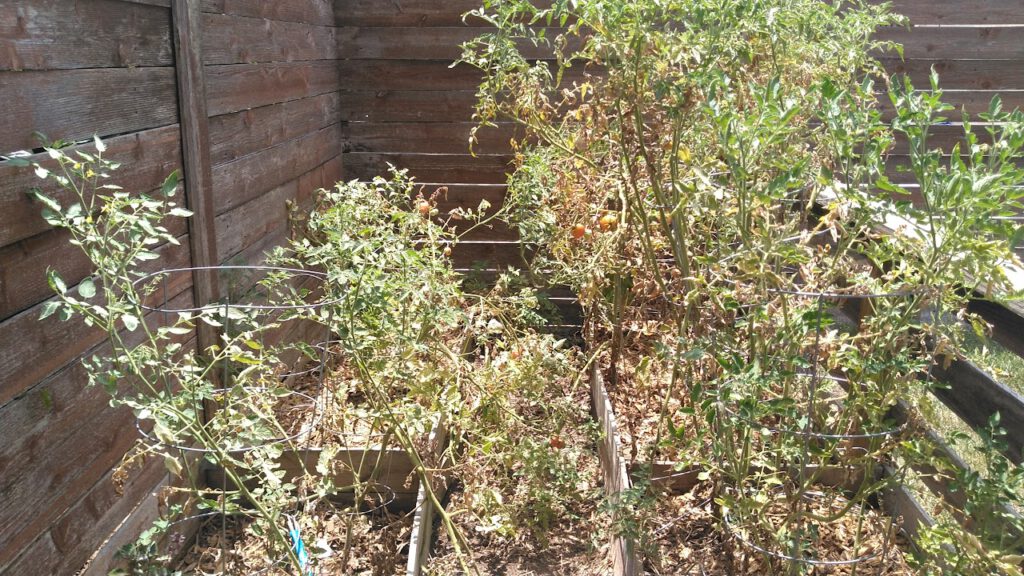
Addendum for the 2025 Experiments
In 2025 there were mistakes made with the tomato plantings, and there were mistakes from 2024 which were avoided. I’ll keep this summary short, but keep in mind that I do have extensive documentation with shorthand notation to preserve the double blind, and a rapidly growing Google Sheet.
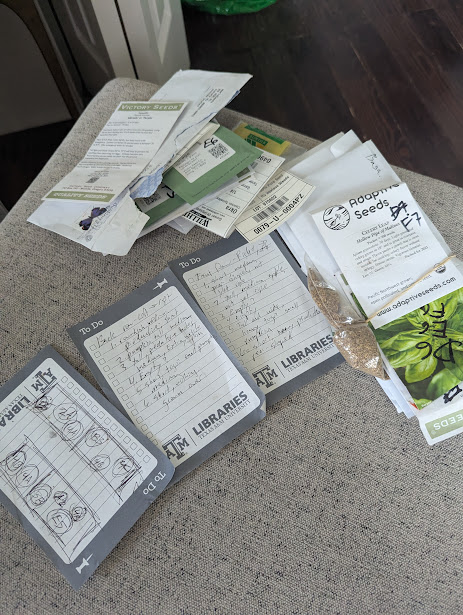
This year I got the seeds planted at a reasonable time, and I also got them into the ground a lot earlier than in 2024. However, because I was growing the seeds in a low-quality Hill Country Fare potting soil which was mostly twigs and hardly any actual soil, the seeds took a month longer to sprout than normal, and many didn’t sprout at all. The tomatoes which did eventually sprout were straggly and sickly. But once they got into the ground and into my highly composted soil, they quickly took off, looking much better than the tomatoes of previous years. I can barely walk into the garden area they’re so overgrown.
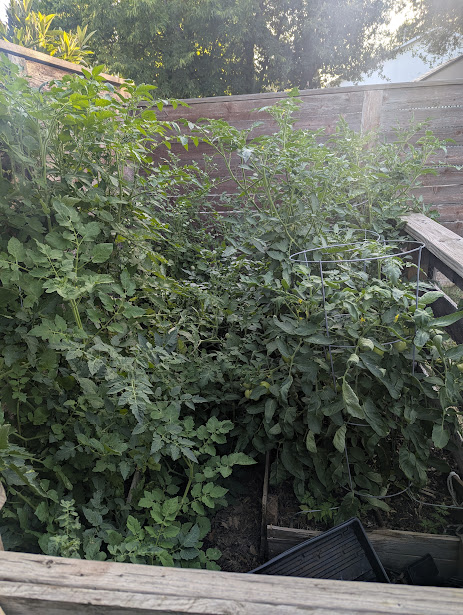
And maybe it’s the comparably wet and cool summer we’re experiencing (it’s hardly above 95 degrees at all!), but the tomatoes are producing and going strong and showing little inclination toward shriveling up and dying.
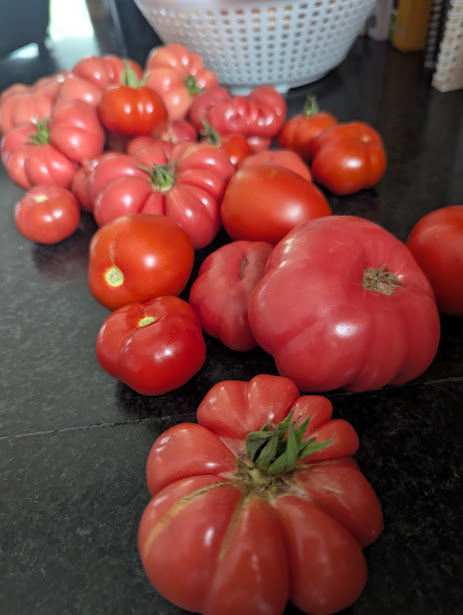
So, the final result, the tomato varietals which have more or less routinely succeeded under the horrible growing conditions in Texas:
- Raspberry Mochi
- Criolla Quetzaltepeque
- Nueva Vizcaya Nipple
- Basrawya
The runners up, the varietals with some asterixes after their results:
- Al Kuffa (I swear it’s worked well in previous years)
- Abu Rawan (it probably just drew a bad card on the seedling stage)
- African Togo (a notation error may have caused it to have a lower score this year)
If you have tried any of these tomato types in the Texas area, let me know what results you’ve seen in the comments!